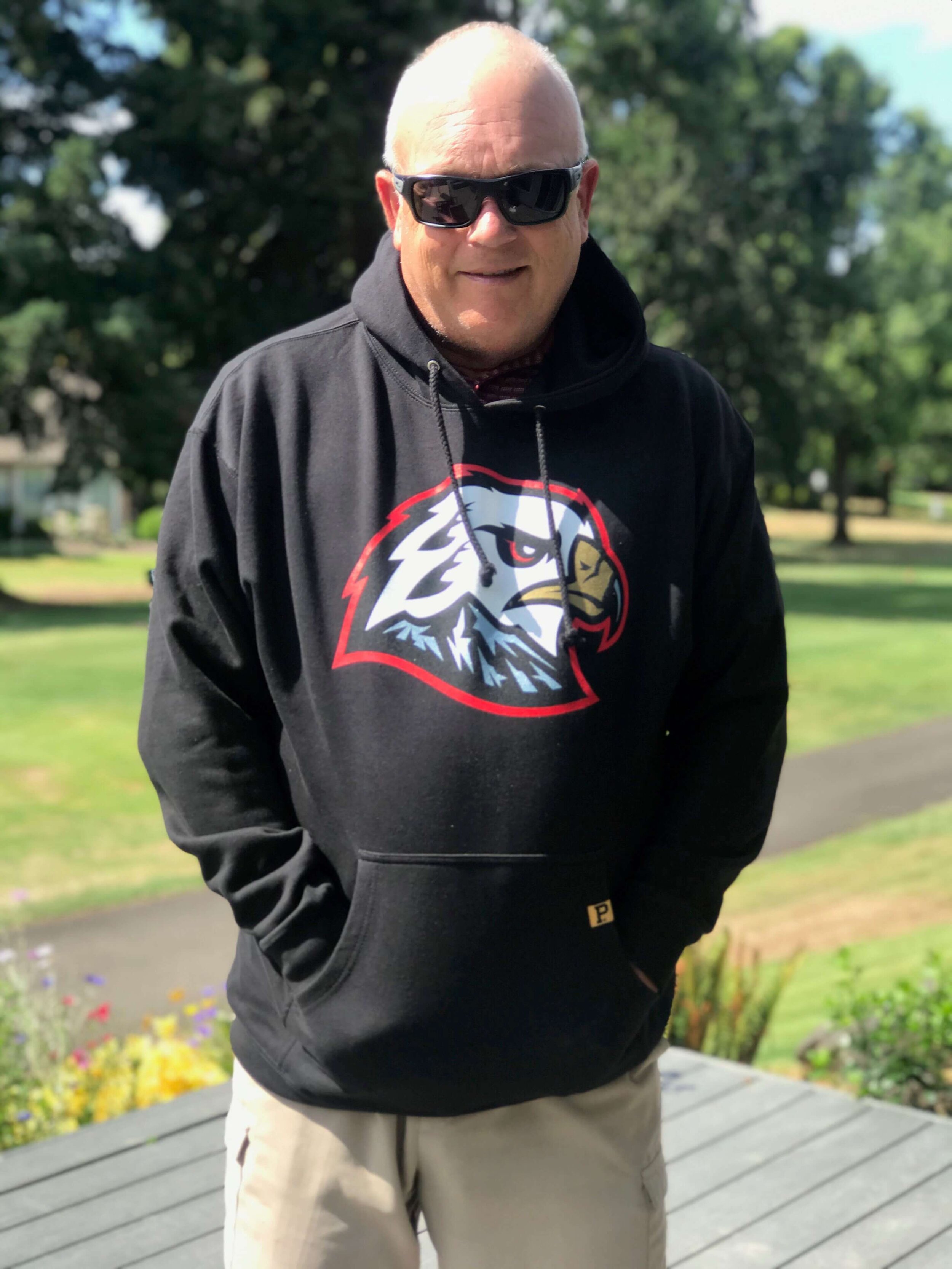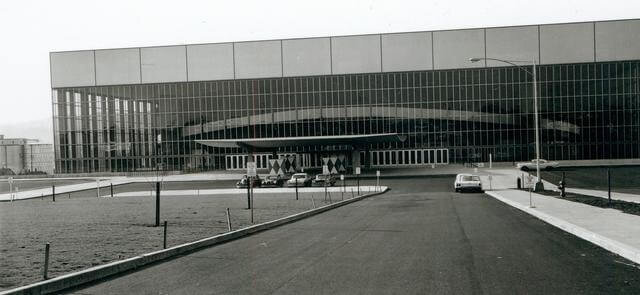Looking at the Winterhawks Heading into 2021-22: A new logo and uniforms, Plus plenty of Other Changes
Change is inevitable and, oftentimes, beneficial to a sports franchise.
After 45 years, it was time for the Winterhawks to freshen up their logo and, in corporate speak, create a new “brand identity.”
Political correctness provided a push for Portland’s major junior hockey club to move away from its Native American-based logo — borrowed from the NHL Chicago Blackhawks when it moved to the City of Roses in 1976 — to an approach based on the “hawk” part of the team’s nickname.
A Northwest-based Native American organization had launched a petition calling for the Winterhawks to change from the logo it deemed “offensive” and an example of “institutional racism.” The group’s executive director told KATU-TV that the old logo — which depicted a Native American in traditional headdress — created an aura that “it’s OK to be racist.” I’d contend that very few, if any, people would think of it in those terms.
The local WHL club became the “Winter Hawks” when it moved from Edmonton, acquiring used jerseys from the Blackhawks for their initial squad. At a press gathering Wednesday at Memorial Coliseum to unveil the new logo and color line of player jerseys, new majority owner Michael Kramer said Brian Shaw, then the president/general manager of the club, was “given” the jerseys by the Blackhawks. (Shaw, thrifty to put it kindly, always told me he had purchased the jerseys, but that’s beside the point.)
“We’re not affiliated with them, and we’re not them,” Kramer said. “We’re from Portland, and we deserve our own identity.”
A few years ago, the team decided to change its nickname spelling from “Winter Hawks” to “Winterhawks.” Mike Johnston, now the team’s vice president, GM and coach, doesn’t recall why; perhaps it was to boost sales of new team merchandise.
Mike Johnston, the Winterhawks’ vice president/general manager/head coach, speaks at the team’s press conference announcing changes in logo and team attire. Johnston is also taking over business-side duties left by outgoing president Doug Piper; no word yet on if Johnston will also drive the Zamboni between periods of games. (Courtesy Winterhawks/Matthew Wolfe)
Now the Hawks have more new “merch” to sell, with a logo that, frankly, is more stylish and definitely 2020s cool. It was designed by Brian Gundell and Marcus Harvey of Portland Gear, with a silhouette of Mount Hood and a “WH” at the neck of the hawk.
“The logo is unique for us,” Johnston says. “It’s a logo that represents the team and the city of Portland, and it represents our aggressive, up-tempo style of play.”
The new color wave includes uniforms in the team’s traditional red and along with ‘“selly” (for celebration) gold and “squall” gray.
Kramer leads an ownership group that paid $5.85 million to take over for previous owner Bill Gallacher, who had purchased the club in 2008.
“The initiative (to update the logo) was (the new owners) wanted something that was unique and had energy,” Johnston says. “Everything they’ve done since they came in has been about connecting to the city. When they heard about Portland Gear, they said, ‘This company is in with the city. They’re everything Portland represents. Let’s get them involved with us.’



















“The first steps for me (with the new logo) were a bit challenging. I thought, ‘Ooh, I don’t know if we want to go in this direction.’ But I like how it evolved and how everything pieced together, with the incorporation of the mountains and the ‘WH.’ I love the ‘P’ logo for the shoulders we can use as a secondary logo.”
There is plenty of other change within the organization under the new owners. In the last month, Doug Piper resigned — not entirely of his own design — after 13 years as the team’s president and Kelley Robinett, the senior VP/business operations who had been with the club since 1999, was let go. Piper did an outstanding job engineering a turnaround on the business after the franchise was run into the ground under previous ownership. Robinett was a respected right-hand man for Piper. As is often the case, ownership wanted its own people running the organization.
The one constant remains Johnston, 64, soon to begin his 12th season as the team’s coach. He’ll assume many of Piper’s duties on the business side now, too.
“Before, we operated hockey operations and business separately,” Johnston says. “We’re trying to bring things tighter together.”
Will he have enough time for all of his duties?
“No,” Johnston says with a smile. “But it’s about having good people around you.”
The Hawks have hired Jeff McGillis, a former vice president with Adidas America, as a consultant on the business side. Johnston has Don Hay — a legendary coach in WHL circles — to help with the coaching end. Long-time assistant coach Kyle Gustafson — who also served as assistant GM the past three years — has departed, though, joining ex-Hawks assistant coach Travis Green to serve as an assistant on Green’s staff with the NHL Vancouver Canucks.
“It was a hard decision to leave,” says Gustafson, a Centennial High grad who has been with the Winterhawks organization for 18 years, starting out as a ticket salesman in addition to his coaching duties. “Mike is a phenomenal mentor. The (Winterhawks) team is in a great spot. They’re going to make another run at a championship next season. But working with the best players in the world and learning from great people in Vancouver — I was ready for the next challenge.”
It has been 16 months since the Hawks played their last game. It’s easy to forget that Portland carried a WHL-best 45-11-3-4 record into the final week of the 2019-20 regular season and was poised to make a serious run at the league title and a Memorial Cup berth when play was shut down due to COVID-19.
During an abbreviated 2021 campaign with no playoffs, Portland went 13-8-3 and in second place in the U.S. Division behind Everett.
“It was really good for us,” Johnston says. “We got 24 games in and had three months of practice. We loaned some players out to the USHL and brought in four young kids. Two of them I wouldn’t have expected to play, and they became really good players — (15-year-old defenseman) Luca Cagnoni and (16-year-old winger) Kyle Chizowski. Both had a huge impact and proved they’re going to be really good players for us.”
In most years before the early January trade deadline, the Hawks have made a trade to bolster their roster for the playoffs. They didn’t do that during the 2019-20 campaign.
“We decided our team was young and had overachieved and we were going to let them run with it,” Johnston says. “We figured, ‘We’re not going to tinker with it at all.’ It was the best thing we never did. Had we traded for two or three good players like Everett, we’d have never gotten to use them. We gave up no assets and were still ahead of schedule. A lot of those young kids are still with us.”
Talented forwards Jaydon Dureau, Reece Newkirk and Seth Jarvis will be in NHL training camps and it’s possible Dureau and Newkirk won’t return to Portland.
“A lot of times those things are 50-50,” Johnston says. “I’m pretty sure we’ll have Seth back, which would be great.”
The Hawks may also have some important international additions for the upcoming season, which begins October 1 in Seattle. They picked up Marek Alscher, a 6-2, 190-pound defenseman from Czech Republic who played in Finland last season, in the Import Draft in late June. And they traded with Moose Jaw for the rights to Sweden’s Jesper Wallstedt, a 6-3, 215-pound goaltender who is expected to be taken among the top 15 players in the upcoming NHL draft.
“We’re hoping we’ll get (the NHL team’s) blessing for Jesper to be with us next season,” Johnston says.
Unfortunately, Johnston and the Hawks’ owners have decided to play all their games in the outdated Coliseum for at least the next two seasons. They have divided home games between the MC and Moda Center over the past 25 years.
Veterans Memorial Coliseum (Courtesy of https://www.portlandoregon.gov/cao/68379)
“The decision was mostly to have just one home arena,” Johnston says. “I love Moda, but it’s complicated to go back and forth, with seating arrangements and so on. I think it’s a good decision. Our players know we’re (in the Coliseum). We’re in one spot all the time. If there are big games the next two years, we can probably bump over (to Moda). The city is looking to do more renovations (to the Coliseum). They’re going to replace 1,500 ripped seats.”
They can’t do anything about the cramped leg room between aisles, though, or the lack of other amenities that a 60-year-old arena can’t offer. Oh well. At least the logo will be new.
► ◄
Readers: what are your thoughts? I would love to hear them in the comments below. On the comments entry screen, only your name is required, your email address and website are optional, and may be left blank.
Be sure to sign up for my emails.



